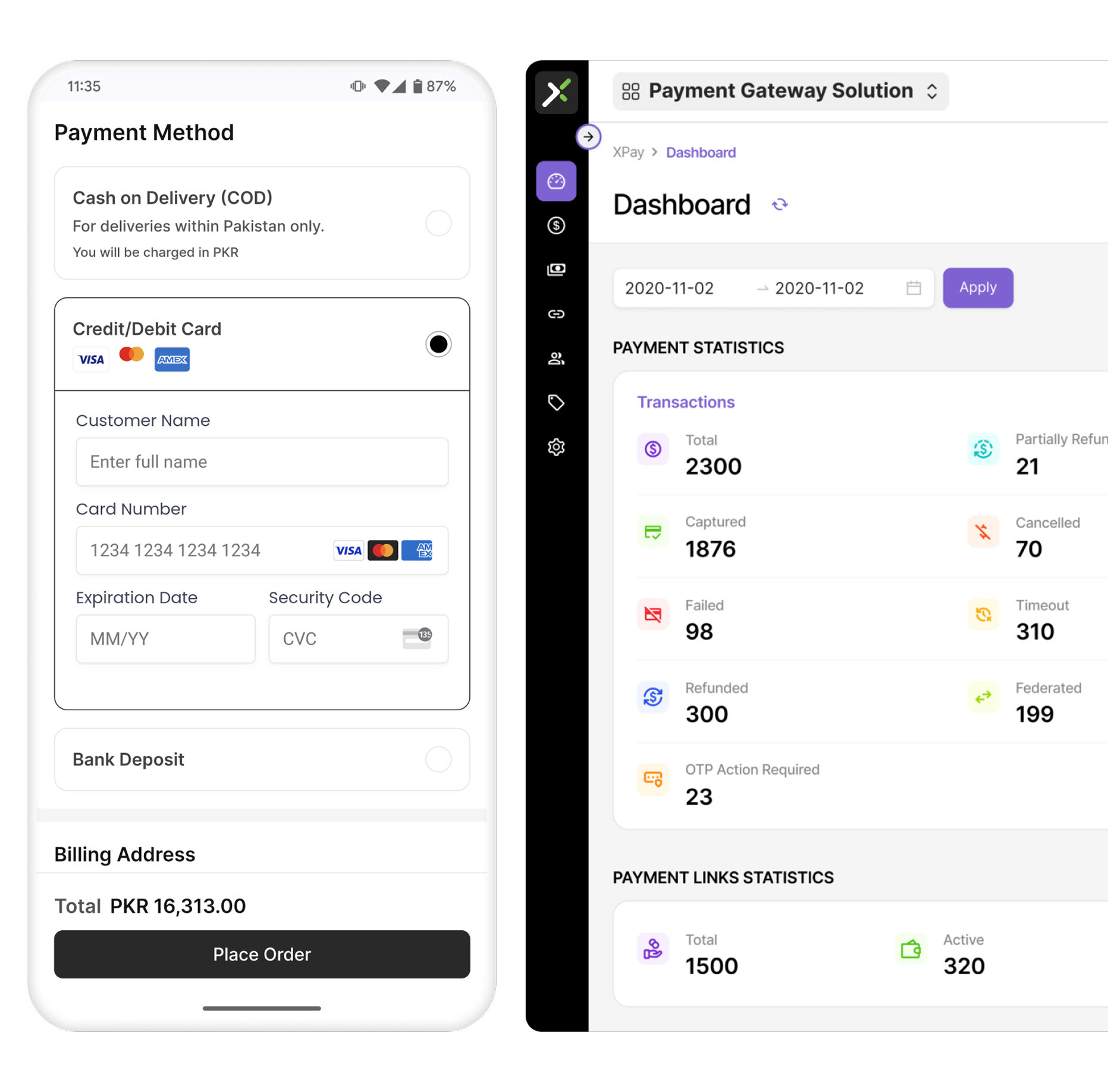BLOG
COD vs. Digital Payments: What Do Pakistani Customers Really Prefer?
Pakistani shoppers prefer COD (80-85%) for trust & low risk, but digital payments rise with convenience & incentives. 2025 trends.

Author
XPay
October 29, 2025
BLOG
Pakistani shoppers prefer COD (80-85%) for trust & low risk, but digital payments rise with convenience & incentives. 2025 trends.

October 29, 2025

In the bustling world of e-commerce in Pakistan, where online shopping has exploded from niche to mainstream, one question looms large: when it comes to paying for that new gadget or outfit, do customers reach for cash on delivery (COD) or tap into digital wallets?
As of 2025, Pakistan's e-commerce market is projected to continue its rapid growth, fueled by increasing internet penetration and smartphone usage.
However, payment preferences reveal a fascinating tug-of-war between tradition and innovation. While digital payments are on the rise, COD remains a staple for many.
This blog post dives deep into the data, trends, and reasons behind these choices, drawing from recent statistics and insights to uncover what Pakistani customers truly prefer.
Before we explore preferences, let's clarify the basics. Cash on Delivery (COD) is a payment method where customers pay in cash (or sometimes via card/UPI at the door) only after receiving and inspecting their order. It's simple, risk-free for buyers, and doesn't require a bank account or tech savvy.
On the flip side, digital payments encompass a range of options like mobile wallets (e.g., JazzCash, EasyPaisa), bank transfers, credit/debit cards, and instant payment systems like Raast, Pakistan's real-time payment infrastructure launched by the State Bank of Pakistan (SBP).
Digital payments offer speed and convenience: transactions happen in seconds, often with cashback incentives or seamless integration into apps. But in a country where trust in online systems is still building, COD acts as a safety net against fraud or poor-quality deliveries.
Despite global shifts toward cashless economies, COD continues to reign supreme in Pakistan's online shopping scene. Recent data shows that 7 out of 10 online consumers still opt for COD, primarily due to concerns over online payment security and low credit card penetration. In fact, COD accounts for 80-85% of e-commerce transactions in some estimates, though this is gradually declining from peaks of around 88% in previous years.
Why this preference? Cultural and practical factors play a big role. Many Pakistanis, especially in rural or semi-urban areas, lack access to banking services or harbor distrust toward sharing financial details online.
COD builds trust by allowing inspection before payment, reducing the fear of scams or subpar products. A study on e-commerce payment selection highlights that in developing markets like Pakistan, COD persists because it's perceived as low-risk for buyers.

Growth of Digital Payments in Pakistan E-commerce (2017-2022)
From a seller's perspective, however, COD isn't ideal. It leads to higher return-to-origin (RTO) rates, around 25% in some cases, and adds costs for cash handling and logistics. Yet, platforms like Daraz and OLX continue to support it heavily, knowing it's key to onboarding new users.
To illustrate the pros and cons of COD:
While COD dominates, digital payments are gaining ground fast. Internet banking users surged by 200% between 2019 and 2023, and mobile banking grew by 185% in the same period. Tools like Raast have revolutionized instant settlements, reducing reliance on COD by enabling real-time transfers for vendors. Digital wallets, particularly JazzCash and EasyPaisa, are leading the charge, with adoption accelerating due to smartphone proliferation—Pakistan now has over 60% of its population banked.
In retail payments overall, digital transactions account for an impressive 88% by volume, highlighting broader cashless adoption. However, in e-commerce specifically, digital methods like cards and wallets make up only 15-20% of transactions. This gap underscores that while P2P transfers and bill payments are digitized, merchant transactions lag behind.

Projected E-commerce Digital Payments in Pakistan (2017-2023)
Key drivers for digital payments include:
A comparison table for digital payments:
Pakistani customers' choices boil down to trust, accessibility, and infrastructure. A staggering 84% report network issues as a barrier to digital payments, with Pakistan ranking 100th globally in mobile internet speeds (24.3 Mbps). Cash remains king at 98% usage overall, but e-commerce preferences skew toward COD due to low trust in platforms—echoing sentiments like "COD is exhausting but necessary" from users on social media.
Urban youth are shifting to digital for premium purchases, while smaller towns stick to COD. Cultural norms, as noted in research, also favor tangible cash exchanges over virtual ones.
Challenges for digital adoption include weak connectivity, literacy gaps, and fraud fears. However, future trends point to a decline in COD dominance. Projections show digital wallets growing rapidly, with mobile-first solutions and Raast leading the way. By 2027, e-commerce payments could see more balanced splits, especially with offline QR solutions and better infrastructure.
To bridge the gap, experts recommend piloting transit-focused POS systems and enhancing trust through education.
In 2025, Pakistani customers still largely prefer COD for its trustworthiness and simplicity, but digital payments are catching up, driven by convenience and government initiatives. As infrastructure improves and trust builds, we may see a more even split. For now, the preference leans toward COD, proving that in Pakistan's evolving digital economy, old habits die hard, but innovation is knocking at the door. What do you prefer? Share your thoughts in the comments!
Offer customers a faster, secure checkout experience without redirects. From cards and wallets to payment links. XPay helps you reduce drop-offs and get paid reliably.
Get Free Demo
